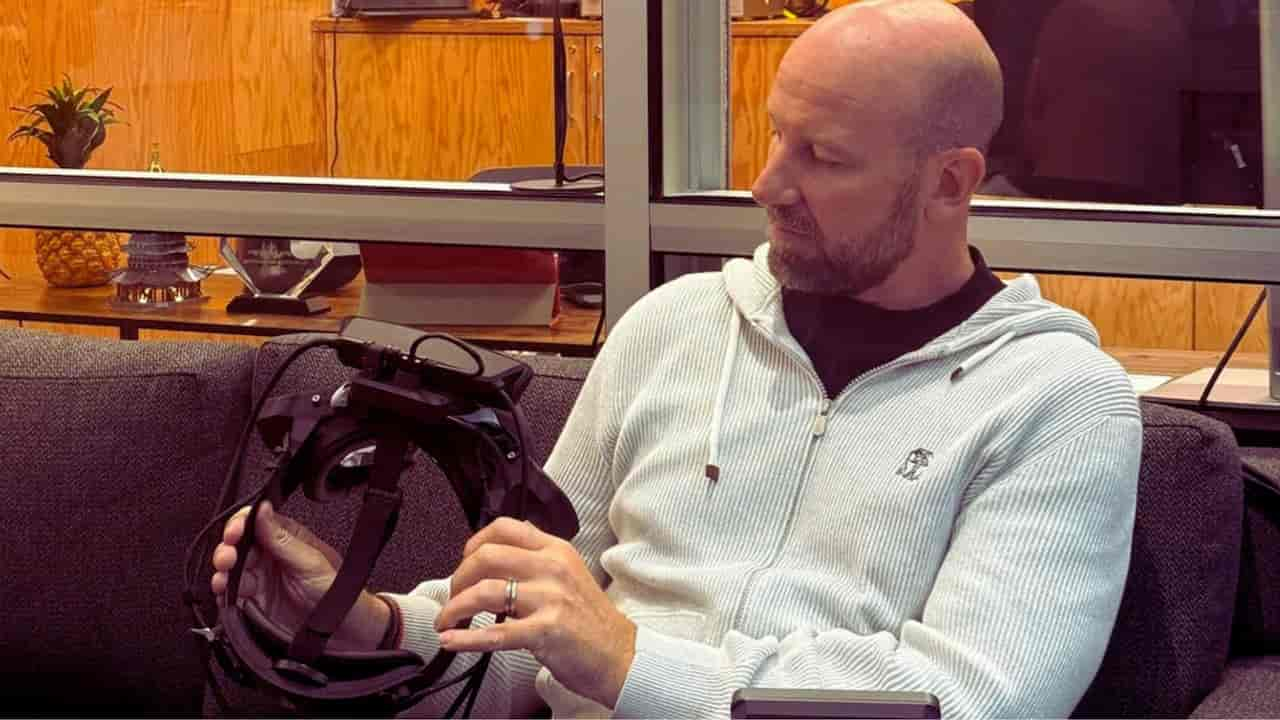Meta’s futuristic VR headset prototype hints at a wider field of view
In a surprising reveal, Meta’s Chief Technology Officer Andrew Bosworth has given tech enthusiasts a tantalizing glimpse into the future of virtual reality. During a recent visit to Meta’s research labs, Bosworth shared images that have set the VR community abuzz with excitement.
The standout photo shows Bosworth holding what appears to be a groundbreaking VR headset prototype. This isn’t your average Quest headset—it’s a device that could revolutionize how we experience virtual worlds.
A Wider View into Virtual Realms
The prototype that Bosworth is holding differs significantly from the current VR headsets. Its most striking feature is a wide, curved body that extends beyond the usual boundaries of VR goggles. This design suggests Meta is working on significantly expanding the field of view (FOV) in future headsets.
Why does this matter? A wider FOV could make VR experiences feel more immersive and natural. Imagine being able to see more of the virtual world without turning your head—it’s like upgrading from watching TV through a small window to having a panoramic view.
The headset also sports angled lenses, another clue that Meta is pushing the boundaries of what’s possible in VR optics. These canted lenses likely play a crucial role in achieving that wider field of view.
Not Your Everyday Headset (Yet)
It’s important to note that this device is clearly in the experimental stage. The prototype is tethered, meaning it’s connected to a computer rather than being a standalone unit like the Quest 3. It also has what looks like an off-the-shelf sensor bar attached to the top—a common practice in prototyping to avoid building complex systems into early designs.
Meta’s Open Approach to Research
This reveal is part of Meta’s refreshingly open stance on sharing its long-term hardware research. It’s a tradition that dates back to the company’s acquisition of Oculus, which has since evolved into Meta’s Reality Labs division.
In recent years, Meta has been remarkably transparent about its VR research. Meta has showcased a variety of prototype headsets, each demonstrating innovative approaches:
- Retinal resolution displays
- Varifocal optics
- Ultra-bright, high-dynamic range visuals
- Advanced passthrough technology for mixed reality
Meta can determine the most impactful technologies for future consumer products by testing these cutting-edge features.
What This Means for VR Fans
While it’s exciting to see Meta pushing the boundaries of VR technology, it’s important to keep expectations in check. Don’t expect to see a wide FOV Meta headset on store shelves anytime soon. The company’s current focus is on its recently released Quest 3S, and any radically new designs are likely years away from hitting the market.
Meta’s CTO emphasized that the company has many prototypes in development “at all times,” but not everything makes it to production. The journey from experimental prototype to consumer product is long and often unpredictable.
The Bigger Picture
This prototype reveal is merely one aspect of a broader puzzle. Bosworth’s lab visit photos also showed:
- A Ray-Ban Meta glasses prototype
- The Quest 3 is equipped with Project Aria research glasses.
- Images of Bosworth with Michael Abrash, Meta’s Chief Scientist, who leads Reality Labs Research
These glimpses into Meta’s research labs paint a picture of a company deeply committed to pushing VR and AR technology forward. While we may not see the fruits of this labor immediately, it’s clear that Meta is investing heavily in the future of immersive experiences.
What’s Next for Meta and VR?
As VR enthusiasts eagerly await the next big breakthrough, Meta continues to refine its existing products. The company continues to prioritize iterative improvements to its consumer line, as evidenced by the recent release of the Quest 3S.
However, the wide FOV prototype suggests that more radical changes could be on the horizon. As VR technology matures, we may see future headsets that offer:
- Dramatically wider fields of view
- Higher resolution displays
- More advanced optics
- Improved comfort and ergonomics
While the timeline for incorporating these features into a consumer product remains uncertain, Meta remains committed to pushing the limits of virtual reality.
For now, VR enthusiasts can find comfort in the knowledge that some of the most innovative minds in technology are quietly developing the next wave of immersive experiences. The future of VR looks wider, brighter, and more exciting than ever.
Table of Contents
